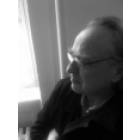The Photograph as Memory Image in the Early Work of Gerhard Richter
Über den Vortrag
Benjamin Buchloh has long followed and championed the work of Gerhard Richter, whose early work from photographs and means of visual cancellation does the work that German memory would not.
The work of Dresden-born artist Gerhard Richter spans nearly five decades and media from painting to photography; sculpture to bricolage; drawings to over-painted gelatin prints. His towering oevre has tackled the postwar German culture of memory, paving the way for new aesthetic strategies of historical confrontation. And all throughout, Benjamin Buchloh, Andrew W. Mellon Professor of Modern Art at Harvard University and a Daimler Fellow at the Academy, has been trying to decipher exactly what Richter has been trying to do and mean – specifically as it relates to the German culture of disavowal. At his December 3rd lecture, Buchloh focused on the painting “Tisch,” made in 1962, as the image that is the “Urszene” of Richter's entire aesthetic project since he left the Socialist Realist tradition in which he was trained and that signifies his first confrontation with Germany's National Socialist crimes.
Buchloh wants to, he says, “complicate the historical account of German reconstruction culture” by arguing that the period from 1955 to 1965, which he dubs the “period of German disavowal,” represented a period, too, of the “German inability to mourn,” a phrase made famous by Alexander and Margarete Mitscherlich in their 1967 psychosocial study of the immediate German postwar years.
Gerhard Richter, Buchloh notes, is an artist who allows the confrontation with the “apparatus of silence” that had cowed the aesthetic world into strategies that while attempting to approach the recent historical past, actually obfuscated it. The painting “Tisch” from 1962, then, offers at once a gesture that cancels out and creates at the same moment – each action essential to the work's function. It disavows at the same time it comments upon disavowal by creating itself. A visit to Documenta in the early 1960s played into such a monumental creation: it was there that Richter encounted the work of the Italian Lucio Fontana and Frenchman Jean Fautrier – as well as the images of Robert Rauschenberg a few years prior – leading to a radically different approach to the physical surface – and denial – of the canvas.
Kundenrezensionen
5,0 von 5 Sternen
| 5 Sterne |
|
5 |
| 4 Sterne |
|
0 |
| 3 Sterne |
|
0 |
| 2 Sterne |
|
0 |
| 1 Stern |
|
0 |



